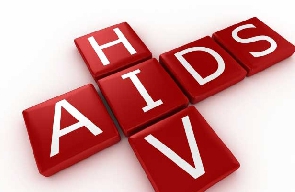Health authorities in the Ashanti Region are worried about the sudden increase in the prevalence rate of HIV infection in the Region.
The Region, which had been recording declining rates in the last three years, saw a sudden rise in infections in 2017 at the rate of 3.2 percent, as against 2.6 percent in 2016, 2.7 percent in 2015 and 2.8 percent in 2014.
Dr. Yeboah Ewudzi, Deputy Regional Director in-Charge of Public Health who made this known, however, said there had been improvement in the number of pregnant women who had gone for testing, saying that 92.2 percent of pregnant women went for HIV testing as at September this year, as against 87.1 percent in 2017.
Those who were put on Anti-Retroviral Treatment (ART) rose from 84 percent to 98 percent in the same period.
Dr Ewudzi said early diagnosis for newborns also improved, adding that 9.5 percent tested positive in 2017, compared to 7.1 percent in 2018.
He was speaking at the Regional celebration of 2018 World AIDS Day at Sepase in the Atwima Nwabiagya Municipality.
It was under the theme “Know Your Status”.
Dr Ewudzi said ART sites in the Region had increased from 59 to 80, adding that, 55,335 people were tested between January and September this year, as against 39,568 in 2017.
Dr. Yeboah Ewudzi expressed worry at the rate at which the youth were contracting the disease, citing that, “every minute of every day, a girl aged between 15 to 24 years get HIV in the Sub-Saharan Africa”.
He urged people to know their HIV status through testing, and to access HIV prevention, treatment and care services.
Ms. Olivia Graham, Ashanti Regional Technical Coordinator of the Ghana AIDS Commission, said Ghana had chosen the sub theme “Test, Treat to Suppress and Stop New HIV Infection”.
This theme she noted, was in line with UNAIDS’ “90-90-90” fast track targets in responding to the HIV epidemic and aims at ending AIDS by the year 2030 as well as the nation’s quest to eliminate new HIV infections and AIDS related deaths.
Health News of Monday, 3 December 2018
Source: ghananewsagency.org
Ashanti Regional health officials worried about high HIV rate in the region
Entertainment
















